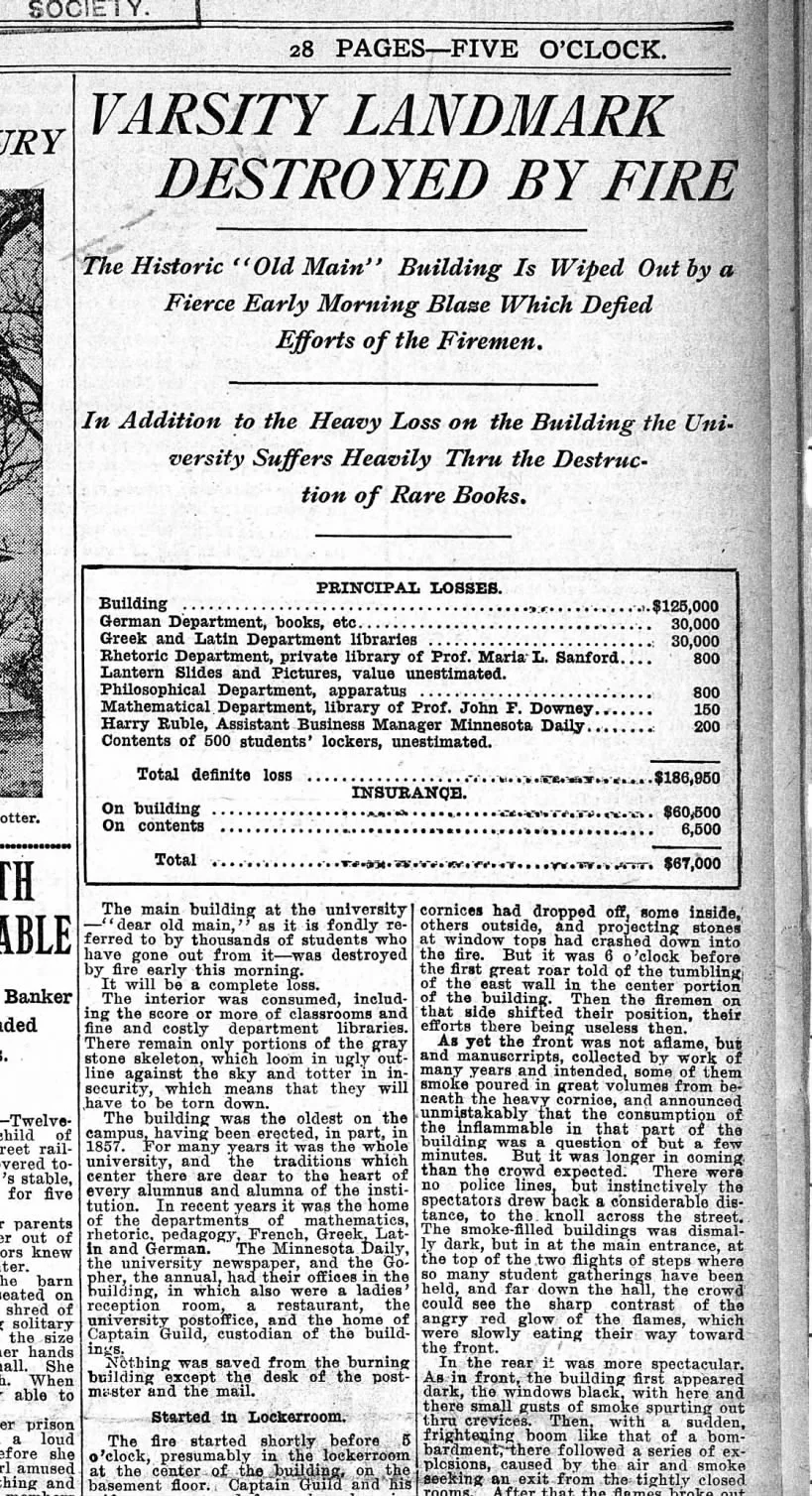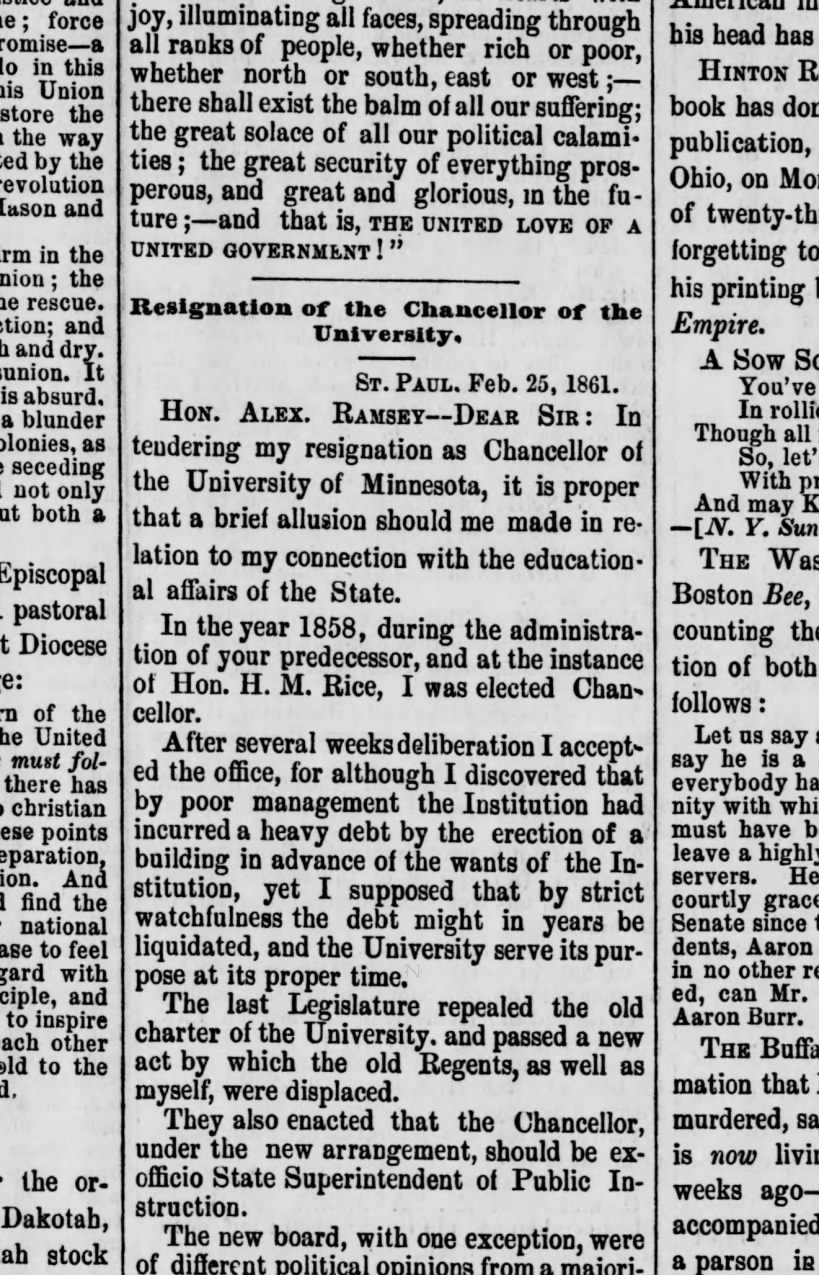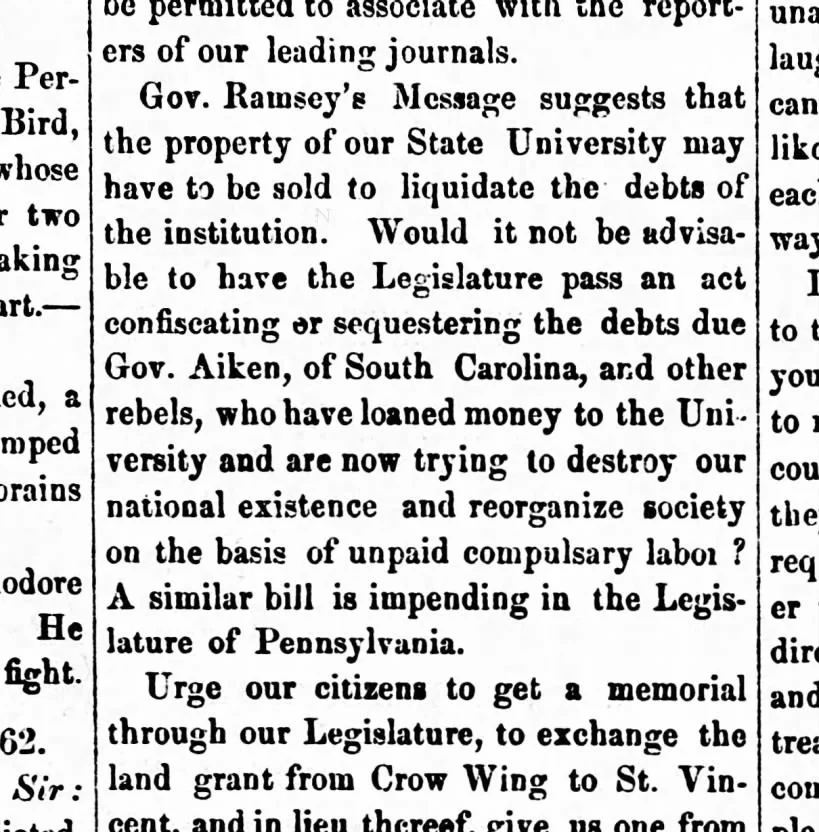When the University of Minnesota Crashed and Burned
The University of Minnesota prides itself on being “established in 1851” (and sells plenty of merchandise to prove it) which was before Minnesota was even a state. However, the school didn’t graduate a college class until 1873. Why? Because at first, the University crashed and burned.
In 1851 territorial Governor Alexander Ramsey and Representative Henry Sibley worked together to charter, or start, the university with over 46,000 acres of free land granted by the government that they could sell to raise funding. The first school house was built (where Chute Square is today) and it opened as a high school, also called a preparatory or prep school. By the third year, they had almost 175 students - but when the only teacher left, it closed. And then it burned down in 1864.
The fledgling school was in financial crisis and it was discovered that the original regents had wasted funds, taken out too many loans, and mismanaged the accounts. A new Board of Regents was appointed. At the same time, immigrants were flooding into the state and land values on the rise. The new Board took a gamble and bought 27 acres in Saint Anthony and made grand plans for a Main building.
And then the stock market crashed. The University was suddenly and embarrassingly in debt. Many thought that all of the land grant would be lost and the state would be without a university. But in 1864, John S. Pillsbury - of that Pillsbury family - took over and step by step led the university into the clear, in part by making large personal donations. He went on to become the Governor of Minnesota and is remembered as the “Father of the University”.
Pillsbury passed leadership on to William Folwell and the first college freshmen started classes in September of 1868. More than a dozen buildings were soon added on campus and Old Main was finally completed. Unfortunately, it also burned down in 1904.
On a more positive note, finally on solid footing, the university graduated over 500 students the following year.
Today, more than 172 years later (with over 50,000 students and an annual budget of over 4 billion dollars) I think we can agree that the University’s financial outlook is doing just fine.























